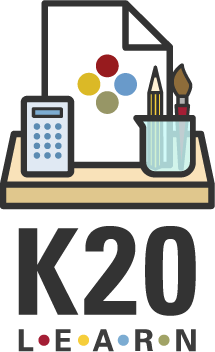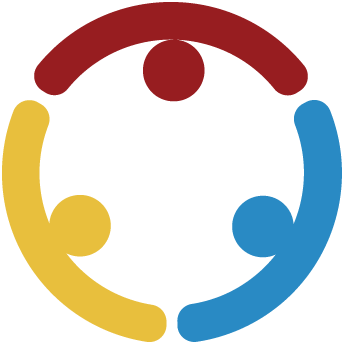Summary
Students dive into the world of ancient Mesopotamia by watching a captivating video and adding captions to striking cuneiform images. The adventure continues with a fast-paced scavenger hunt where students become ancient scribes, practicing how to read and transliterate cuneiform symbols. Next, students team up for a jigsaw reading from Google Arts & Culture, uncovering fascinating insights into one of the world's earliest writing systems. Creativity takes center stage as students design their own cuneiform-inspired artifacts—tablets, seals, or scrolls. To wrap it all up, students use a Venn Diagram to compare and contrast cuneiform with modern languages, sparking thoughtful conversations about how writing shapes civilizations.
Essential Question(s)
What can ancient writing systems like cuneiform teach us about human communication today?
Snapshot
Engage
Students begin by watching a video and captioning cuneiform related images.
Explore
Students participate in a scavenger hunt and practice transliterating cuneiform.
Explain
Students jigsaw a reading from Google Arts & Culture.
Extend
Students create their own cuneiform project.
Evaluate
Students use a Venn diagram to compare and contrast Cuneiform vs. modern languages.
Materials
Lesson Slides (attached)
Caption This handout (attached; one per group)
Cuneiform in Context handout (attached; one per student)
Graphic Organizer handout (attached; one per student)
Bad Yelp Review handout (attached; class set)
Alphabetic Cuneiform Chart handout (attached; one per student)
Scavenger Hunt handout (attached; one per group)
Riddles Answer Key handout (attached; teacher copy)
Riddles Slips handout (attached; see Preparation Note)
Mug Template handout (attached; one per student)
Clipboards (optional)
Clay (for the scavenger hunt, can be anything: play doh, salt dough, air dry clay, etc.)
Popsicle sticks
Brown construction paper (optional)
Black markers (optional)
Terra Cotta clay
Clear glaze
Pen/pencil
Preparation
10 Minute(s)
Explore
For the Scavenger Hunt activity, you will need to print 1-2 copies of the Riddles Slips handout. While the narrative focuses on having students solve only Riddle 1, see our “Teacher’s Note: Scaffolding the Activity” for guidance on adding Riddle 2. We suggest printing 2 copies of the Riddle Slips based on class size (i.e. if you have a larger class, it may be easier to have more slips for students to work with so that groups aren’t fighting over the same slip). Print and cut however many slips you need. Then, hide the slips around your room for students to find. The slips are labeled “Riddle 1.1” meaning “Riddle 1” and “word 1” etc.
Extend
Review the narrative and “Teacher’s Note: Cuneiform Project Modifications” to decide which project you will have students do. Read through all the steps carefully and have the relevant materials ready.
Engage
15 Minute(s)
Use the attached Lesson Slides to guide the lesson. Display slide 2 to show the title. Then start by posing the essential question and explaining the lesson objectives using slides 3–4.
Move to slide 5 and play the “Cuneiform” video for students.
After they have viewed the video, have students get into small groups and pass out one copy of the Caption This handout to each group. Move to slide 6 and explain the Caption This instructional strategy to students. Instruct students to use what they learned from the video and what they see in the images to create with their group a 1-3 sentence caption describing what the image represents. Move through slides 7-10 to show the images bigger. Pause between slides to give students enough time to observe the images. Have a few students share some of their captions before moving on.
Explore
35 Minute(s)
Transition to slide 11 to review important vocabulary. Emphasize to students that Cuneiform is a writing system, not a language. They will not be translating with this activity, but transliterating.
Display slide 12 and pass out an Alphabetic Cuneiform Chart handout to each student. Introduce the chart and explain the differences/adjustments between the two writing systems (for example, there is no ‘E’ so you use ‘I” instead). Inform students that they will use this chart for a scavenger hunt.
Have students form small groups. Move to slide 13 and pass out the Scavenger Hunt handout, one per group. Using the slide, introduce students to the Scavenger Hunt activity. Explain that students will be solving a riddle from the Riddles Slips handout (see previous note in Preparation section). Each word of the riddle is hidden somewhere in the room and is in cuneiform. Tell students that they will find the word, transliterate it from cuneiform into English, then write it down on their paper in the marked space provided. Once they have found and transliterated all words of the riddle, they will solve it (in English). They will then transliterate it from English into cuneiform. Display slide 14 and review how to stamp clay (if needed, play the tutorial video on the slide). Explain that after they finish the scavenger hunt, they will stamp their cuneiform word into a slab of clay, using a popsicle stick. The first group to correctly stamp the cuneiform answer into the clay wins! Move to slide 15 to have the directions for the scavenger hunt displayed as students work. Give students time to work and make sure all materials are ready for them.
Explain
30 Minute(s)
Pass out the Cuneiform in Context handout to every student. Display slide 16 and select the Writing and Books link on the slide to introduce the Google Arts & Culture web resource students will be using during the lesson. Read the initial description and read through the passage of the “Clay Tablet” aloud to the class. Have students complete the first section summary on their handout about the introduction. Go back to slide 16 and have students get into groups of four and allow them to choose which section they want to read from the list provided:
Hebrew script + Scroll
Nepalese script + Leporello
Lettering sketch + Typeface design
Specimens, catalogs, typeface specimens
Transition to slide 17 to share the shortened URL link. Direct students to access their electronic devices and log onto the website. Allow students time to read their specific section and create a 2-3 sentence summary for their assigned section. Allow students time to work.
Move to slide 18 and introduce students to the Jigsaw instructional strategy where they will now teach their section of the Google Arts & Culture resource to the rest of their group.
Extend
100 Minute(s)
Display slide 19 and pass out the Bad Yelp Review handout to every student. Introduce the article to the students by explaining that when this tablet was translated, historians discovered the author was complaining about a copper delivery to a business owner. It was not as quick or easy to write things down using clay tablets compared to our being able to type something up on our phone, but this person still took the time to do it. This shows us how people are still the same thousands of years later. Have students read (aloud or silently) the actual complaint from the handout.
Move to slide 20 and explain that students will create their own cuneiform mug, using their own bad Yelp review as the content. Pass out the Graphic Organizer and Mug Template handouts to every student and instruct them to use this space to brainstorm an item or service they would complain about, draft the response in English, and then again in Cuneiform using their Alphabetic Cuneiform chart.
Explain that students will be creating a mug out of terra cotta. It is similar to the typical white stoneware used in ceramics classes except that when it is fired, it will be orange, similar to many of the original cuneiform tablets. This mug will be created using the slab method: the slab will serve as their “clay tablet.” Students will carve their message into the clay using a popsicle stick while the clay is flat on the table; then they will form the slab into a cylinder for their mug.
Provide all materials for students and allow them time to work.
Evaluate
15 Minute(s)
Display slide 21. Have students work with a partner and draw a Venn Diagram that compares cuneiform to modern languages. Encourage students to not only use what they learned from this lesson, but also other classes like their foreign language classes.
Resources
K20 Center. (n.d.). Caption this. Strategies. https://learn.k20center.ou.edu/strategy/82
K20 Center. (n.d.). Jigsaw. Strategies. https://learn.k20center.ou.edu/strategy/179
K20 Center. (n.d.). Venn diagram. Tech Tools. https://learn.k20center.ou.edu/tech-tool/689
Harmon, J. (2025). Writing in cuneiform. Video. https://www.youtube.com/shorts/HxDPZG_KhH0
Lubocki, J. M. (n.d.). Writing and books at the National Museum of Wroclaw.
Google Arts & Culture. https://artsandculture.google.com/story/7QWxHkBam8ko9A
The Daily Bellringer. (2022, December 4). Cuneiform.
YouTube. [video] https://www.youtube.com/watch?v=MZwaGU6dOH8


